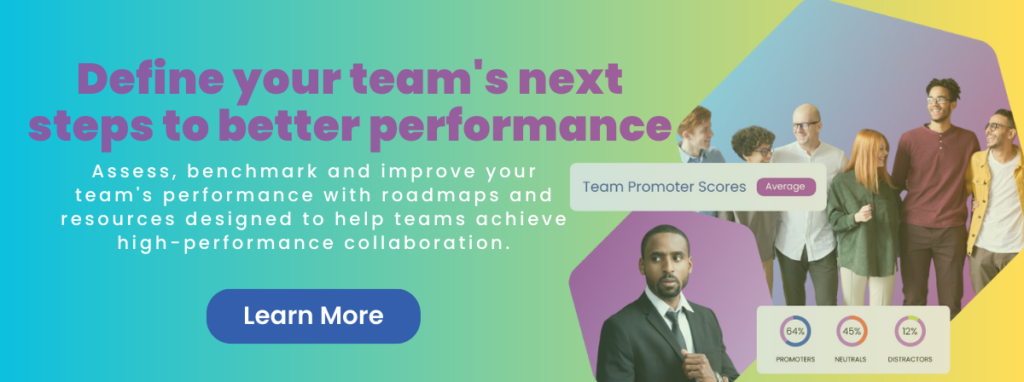Employee feedback is an incredibly powerful tool in today’s workplace, where innovation, collaboration and team sentiment are key drivers of success. Understanding the pulse of your organization is crucial to achieving optimal business outcomes because this information gives decision-makers the critical insights they need to drive optimal performance. But instead of taking a random or unproven approach to feedback, leaders can use an employee feedback platform.
As the name suggests, employee feedback management platforms help you gather and interpret employee feedback. These platforms are useful because they create a space for employees to share their relevant thoughts, opinions and experiences (often anonymously). These insights can then be used to understand feedback in a productive, actionable way.
When employee feedback is managed and leveraged properly, organizations can reap the rewards: Research shows that companies that invest in regular feedback have about a 15% lower employee turnover rate. In comparison, 40% of employees who receive little to no feedback are actively disengaged from their work.
Employee feedback and insights platforms can help you transform your organization. Here’s how these platforms can lead to honest communication from team members and why they can help you take critical action.

How Leaders Can Build a Culture of Candor
Fostering a culture of open communication and transparency is essential for organizational success. Data shows that effective communication can lead to big boosts in productivity, trust and employee retention, while poor workplace communication can lead to high costs, workplace stress and low employee morale.
But building this culture of openness won’t happen on its own: Leaders and decision-makers need to take a top-down approach to building a company culture where clear, honest communication is the norm.
So, how can leaders build a culture of candor? Here are a few examples.
- Lead by Example
Authenticity starts at the top. Leaders who openly embrace feedback, acknowledge their own areas for improvement and demonstrate a commitment to continuous growth set the stage for a culture where honesty is valued.
- Create Airtight Feedback Systems
Proven processes and systems around employee feedback can make it easy to gauge employee sentiment. Using an employee feedback platform brings ease to the feedback collection process and gives leaders instant takeaways and succinct insights into employee sentiment. These systems are also designed to be anonymous, so employees feel safe sharing their honest opinions.
- Provide Training and Resources
Building a culture of candor requires equipping employees with the skills and resources to communicate openly and give and receive feedback. Leaders should invest in training programs and technologies that teach effective communication, active listening and the art of providing feedback to promote growth rather than discouragement.
- Iterate and Adapt
Leaders should be flexible and use employee feedback to adapt their general workplace strategies. Continuous improvement is not only encouraged but also expected in a culture that values openness and embraces change.
Constructive, Actionable Candor
A culture of candor is open communication; employees share their thoughts freely, and leaders understand what their team members are feeling and thinking. But for communication to move the needle, it needs to be both construction and actionable.
What exactly do we mean? The process of gathering feedback itself is insufficient. Organizations must focus on transforming insights into meaningful strategies for improvement.
In order to cultivate a culture of constructive and actionable candor, leaders can do a few things. Firstly, you should demonstrate a clear commitment to creating an environment where open communication is encouraged and celebrated. There should also be well-defined communication channels for employees to express their thoughts.
For example, an employee feedback platform can serve as a structured avenue, offering anonymity if needed. Additionally, encourage open-door policies and regular team meetings where feedback can be shared.
By infusing open communication principles with a robust feedback process, organizations can create a culture where feedback is constructive and actionable, leading to tangible change.
The Power of Feedback (and What Leadership Should Do)
Feedback is a powerful catalyst for growth, innovation and organizational success. When leaders recognize and harness this power, they can use it to drive positive organizational change.
What are some of the impacts of feedback? Firstly, it acts as a driving force behind continuous improvement. When harnessed effectively, it becomes a strategic tool for refining processes, enhancing collaboration and adapting to evolving market demands.
Feedback can also boost employee engagement. Feedback, when delivered and received constructively, fosters a sense of belonging and encourages employees to actively contribute to the organization’s goals. This heightened engagement can positively influence productivity and retention rates.
In order to actually harness and leverage the potential of feedback, leaders can take the following steps.
- Create a Feedback-Friendly Environment
Leadership should actively cultivate an environment where feedback is welcomed and encouraged. This involves dismantling the fear of retribution and fostering a culture where every opinion is valued, regardless of hierarchy.
- Lead by Example
Leaders must exemplify the behavior they wish to see in their teams. By actively seeking feedback, admitting mistakes and demonstrating a commitment to continuous improvement, leaders set the standard for a culture that embraces openness and growth.
- Distill Key Insights From Feedback
Once feedback is gathered, it needs to be processed. By analyzing feedback, leaders can distill useful takeaways, gauge individual and group sentiment and make decisions based on this data.
- Close the Feedback Loop
Employees don’t want to just give feedback into a void. They should know what happens next if they spend the time and energy sharing honest, helpful feedback.
Firstly, you should use feedback as a data point in decision-making processes. When employees see that their input directly influences organizational strategies and decisions, it reinforces the importance of their perspectives.
But second, even if actions aren’t taken following the feedback, you should close the communication loop. Follow up with your employees, thank them for sharing and communicate why action wasn’t taken.
Using RallyBright Team Assessments
While different leading employee feedback platforms exist, RallyBright team assessments give leaders the science and software to drive optimal team performance and dynamics. RallyBright’s proven science-backed assessments give you and your leaders the data and takeaways you need to build high-performing, inclusive and resilient teams.
For example, our flagship team-centered Resilient Teams™ assessment allows you to view team strengths, improvement areas, roadmaps and other resources. Meanwhile, our inclusive collaboration toolkit (built on a validated model for workplace inclusion and collaboration) benchmarks and tracks progress in areas that drive high performance.
Unveiling the Insights
One strategic advantage to using RallyBright is that our team assessment surveys don’t just give you answers; they give you comprehensive insights, roadmaps and resources so you can drive meaningful change. You’ll have a robust view of your team’s strengths and improvement areas, and you can see where to drive the most impact.
Another thing teams and their leaders love about RallyBright is that our platform anonymizes data. While certain tools (such as Team Member Profiles) give you specific insights into each team member, it’s also possible for team members to give anonymous feedback.
When this is the case, your team will candidly answer questions so you can accurately gauge real employee sentiment. Instead of curated answers from team members, you’ll end up with an accurate snapshot of your team sentiment and composition.
New Leaders: From Feedback to Action
New team leaders can face new challenges and obstacles, and it’s critical that they take ideas and strategies and put them into action. An employee feedback platform can be particularly useful in these cases because new team leaders don’t have to guess when it comes to distilling insights from feedback or determining the next steps.
For example, RallyBright provides customized, actionable roadmaps to guide your team’s improvements. You’ll get clear steps on enhancing team performance, can access a library of articles and exercises and can tap into data-driven guidance on growth and team performance.
At the end of the day, an employee feedback platform can help new leaders generate success. They’ll see exactly where their team needs to improve and can access hundreds of resources to take a tactical approach to improvements.
Employee Feedback Platforms Are Extremely Powerful and Can Transform Teams
Your team is full of powerhouse talent. But even teams that are already high-performing have room for improvement. Using employee feedback platforms gives leaders an uninhibited view into how their team is thinking, what they’re feeling and where transformative improvements can be made.
Empower your team by giving them the feedback tools they need for success. RallyBright provides your team with the science, software and skills to build exceptional teams that crush their goals. Find out more by trying a RallyBright demo today.


